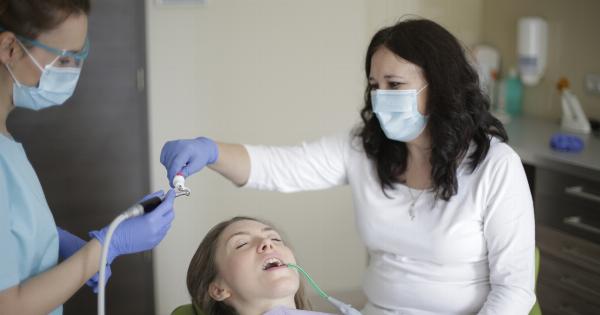Swollen gums can be quite uncomfortable and can indicate underlying oral health issues. If you are experiencing swollen gums, it is important to take action promptly to reduce the swelling and improve your oral health.
In this article, we will discuss various effective ways to reduce swollen gums and promote healthy gums.
1. Practice Proper Oral Hygiene
One of the most important steps in reducing swollen gums is to practice proper oral hygiene. Brush your teeth at least twice a day using a soft-bristled toothbrush and fluoride toothpaste. Be gentle while brushing to avoid irritating your gums further.
Flossing daily is also crucial to remove plaque and food particles from between your teeth and along the gumline.
2. Rinse with Saltwater
A saltwater rinse can be incredibly helpful in reducing gum swelling. Dissolve half a teaspoon of salt in a glass of warm water and swish the solution in your mouth for about 30 seconds before spitting it out.
Salt has antiseptic properties that can help reduce inflammation and promote healing.
3. Apply a Cold Compress
If your gums are swollen due to injury or infection, applying a cold compress can help reduce the swelling and provide temporary relief.
Place a cold pack or a bag of frozen vegetables wrapped in a thin cloth against your cheek near the affected area for about 10-15 minutes.
4. Use a Warm Compress
For swollen gums caused by gum disease or abscesses, a warm compress can be more effective than a cold one. Soak a clean cloth in warm water and wring out the excess.
Hold the warm compress gently against your cheek, near the swollen area, for around 5 minutes. This can help improve blood circulation and alleviate swelling.
5. Maintain a Healthy Diet
Your diet can play a significant role in reducing swollen gums. Include foods rich in vitamins C and D, calcium, and omega-3 fatty acids. These nutrients can help strengthen your immune system, promote gum health, and reduce inflammation.
Add fruits, vegetables, dairy products, fatty fish, and nuts to your diet for optimal gum health.
6. Avoid Irritants
To reduce gum swelling, it is essential to avoid irritants that can further aggravate your gums. Stay away from tobacco products, which can irritate your gums and slow down the healing process.
Additionally, limit your consumption of acidic and sugary foods and drinks, as they can contribute to gum inflammation.
7. Use Anti-inflammatory Gels
Over-the-counter anti-inflammatory gels can provide temporary relief from swollen gums. These gels contain ingredients like benzocaine or hydrogen peroxide, which can help reduce inflammation and soothe your gums.
Apply the gel directly to the affected area as directed on the packaging.
8. Massage Your Gums
To improve blood circulation and reduce gum swelling, gently massage your gums with clean fingers. Start at the base of your gums and move your fingers in a circular motion.
However, if your gums are sensitive or painful, avoid massaging them without consulting your dentist.
9. Schedule a Dental Check-up
If your swollen gums persist or worsen despite your efforts, it is crucial to schedule a dental check-up. A dentist can examine your gums, identify the underlying cause, and provide appropriate treatment.
They may recommend professional cleaning, antibiotics, or other interventions depending on the severity of your condition.
10. Maintain Regular Dental Visits
To prevent swollen gums and other oral health issues, it is important to maintain regular dental visits. Your dentist can detect early signs of gum disease and recommend appropriate preventive measures.
Regular professional cleanings and exams can help keep your gums healthy and reduce the risk of swelling and infection.





























